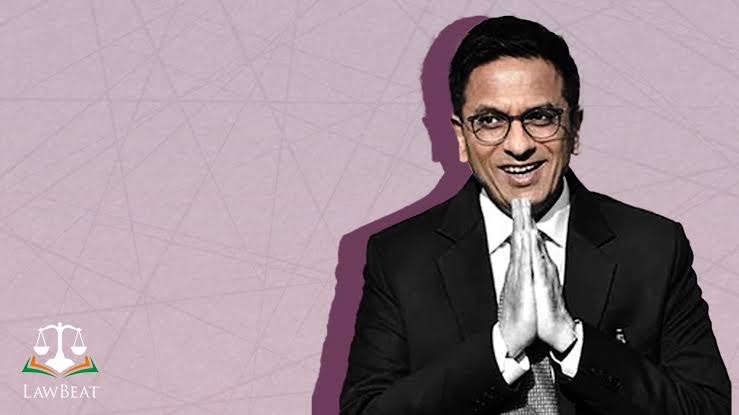Legal Glossary of Inappropriate Gendered Term Soon To Be Released: CJI DY Chandrachud

"Efforts to develop a larger room reserved for women lawyers in the Supreme court's annexe building are also in the pipeline", CJI DY Chandrachud said at an event organised by the Top Court's Gender Sensitisation and Internal Complaints Committee.
The Gender Sensitisation and Internal Complaints Committee of the Supreme Court of India Organised an event on Wednesday to celebrate the belated International Women's day where CJI talked about the release of a legal glossary of Inappropriate gendered terms.
According to the report in Hindustan Times, the chairperson of the committee, Justice Hima Kohli, and Justice B.VNagarathna were also present at the event. During the event, CJI Chandrachud revealed several plans for empowering women in the legal profession. CJI stated that the glossary is soon going to be completed and promised that it will be unveiled in future.
He disclosed that the glossary is being prepared by a committee headed by Justice Moushumi Bhattacharya, Calcutta High Court, along with other Delhi High Court judges like Justice Prathiba M. Singh, former judges Prabha Sridevan and Gita Mittal, and Jhuma Sen, Advocate, Calcutta High Court and Supreme Court and one adjunct faculty member from the National University of Juridical Sciences West Bengal(NJUS Kolkata).
He highlighted positive and promising developments in the legal profession, such as the growing number of women in judicial services and transactions, as well as unfavourable aspects that must be addressed, such as the presence of systemic barriers and incidents of inappropriate behaviour, sexual harassment and discrimination.
The first plan stated by CJI Chandrachud was to publish a legal glossary of inappropriate gendered terminology used in legal discourse. This, he explained, was a project he embarked on a few years ago that is now reaching completion. He hoped that it would offer light on why and how women face discrimination not just in society and the legal profession, but also in the terminology used. He explained that the main purpose behind this is to aid comprehension of our problems within the mind.
"Unless we are open about these facets, it will be difficult for us to evolve as a society”, he said.
CJI also recalled an occurrence as an example of the phrases used to refer to women in legal language that create a platform for discrimination and said that "I have seen judgements that refer to a woman as a 'concubine' when she is in a relationship. Women have been referred to as 'keeps' in court decisions involving appeals for quashing of FIRs under the Domestic Violence Act and Section 498A of the Indian Criminal Code".
He happily stated that the Supreme Court has proposed remodelling its annexe building, which would include a significant space for women in order to create a better atmosphere for them.
The CJI in his keynote address said that one of the profession's difficulties was harassment of women and inappropriate behaviour towards them and that he has heard 'ghastly' incidents involving young, female lawyers and therefore said that there must be zero tolerance for sexual harassment and other inappropriate behaviour targeting women.
On discussing gender diversity in the legal profession, the CJI remained optimistic that a rise in the number of female lawyers and judicial officers ensures a larger role for them in the future. "This holds great hope for the future because these women who are entering the workplace today will define the values, traditions, and aspirations for the present and the future," he added while citing district judiciary figures showing that more than half of judicial officers are women.
He also emphasised that all stakeholders must work together to ensure that law becomes an equal-opportunity profession rather than just a tool to allow for an equal-opportunity workplace.
In some states, colleagues claim that it is hard to find a woman lawyer who can be appointed as a high court judge. As of March 1, the Supreme Court had three female judges out of a total of 34. According to data from the Union Law Ministry, there are now 104 women judges serving on 25 high courts. The sanctioned strength of judges across 25 high courts in India is 1,114. As of March 1, 333 positions (more than 29% of the overall strength) were vacant, CJI underscored.
It is the ‘bounden duty’ of lawyers and judges alike to collaborate in transforming the legal profession into an equal opportunity one, CJI added.
